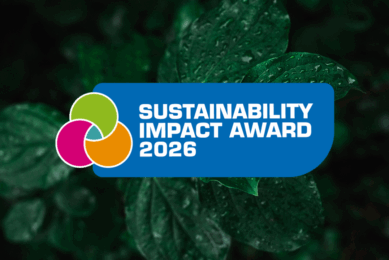Sustainable pet food production in the US

There are more than 163.4 million pets including 77.8 million dogs and 85.6 million cats in the United States that consume animal-based products as a significant percentage of their diet. Given the significant environmental impacts of pet food production, the contributions of omnivorous and carnivorous pets deserve special attention.
US pet food production & environmental impact
Meat-based diets have a considerable impact on the environmental due to more energy, land, and water requirements and greater environmental consequences in terms of soil erosion, pesticide use, fertiliser use, fossil fuel use, and waste. Total annual pet food production in the US is estimated to be 9.8 million metric tons. As a result, pet food production creates a substantial footprint by releasing up to 64 million tons of greenhouse gases such as methane and nitrous oxide. In addition, the environmental impact of dogs and cats based on annual pet food consumption ranges from 27 to 1444kg carbon dioxide-equivalent per year for dogs, and 43 to 228 kg carbon dioxide-equivalent per year for cats. Given the significant environmental impacts of pet food production, the contributions of omnivorous and carnivorous pets deserve special attention.
What does sustainability mean in the pet food industry?
In general, sustainability is described as a harmonious and productive system in which humans and nature can exist, allowing the fulfilment of social, economic, and other requirements of the current population without compromising the ability of future generations to meet their needs. From the perception of pet food production, sustainability is defined as the ability to produce an adequate amount of pet food to meet the essential nutrient requirement for optimum health and viability of companion animals with minimum environmental footprint.
Measuring the environmental impact of pet food production
The carbon footprints of a food system can be evaluated using life-cycle analysis of energy and natural resources as inputs and waste and emissions as outputs and their associated costs. Life-cycle analysis is a well-recognised model framework to investigate climate change, ozone depletion, human toxicity risk, particulate matter, ionising radiation, photochemical ozone formation, acidification, eutrophication, freshwater ecotoxicity, and natural resource use. The life-cycle analysis of pet foods is complicated due to the variety of raw materials, manufacturing technologies, and packaging options. Factors including nutritional composition of diet, raw material selection, packaging specifications, and transportation and distribution channel affect the environmental burden of pet food production systems.
Nutritional composition
Nutritional composition affects the amount of raw material required to achieve the desired nutrient levels. Protein is the most expensive macronutrient and according to the Association of American Feed Control Officials the minimum protein requirement is 18% for adult dogs and 26% for adult cats on a dry matter basis. Protein is provided through animal-based, plant-based, and alternative sources.
Raw material selection
Animal-based proteins comprise most of the proteins in pet foods containing a complete profile of essential amino acids for dogs and cats. However, animal-based proteins tend to have a greater ecological footprint compared with plant-based proteins. On the other hand, antibiotic-free protein sources such as poultry that are popular in pet food have potentially adverse effects on the sustainability aspects of the food chain due to compromised animal health, reduced production efficiency, and increased costs of production. Clean animal offal provides good-quality protein and trace minerals, such as iron, zinc, calcium, and copper in pet foods. Furthermore, rendering animal products avoids 90% of potential greenhouse gas emissions compared with industrial composting. Exchanging animal-based protein sources with plant-based protein sources improves the sustainability of pet foods by using every aspect of the respective crop, consuming fewer natural resources, increasing the number of competitively priced ingredients available to pet food formulators, and maintaining a smaller carbon footprint. Alternative ingredients including yeast, fungi, algae, and insects are potential meat or plant substitutes with approximately 87% lower impact on the ecosystem compared with traditional soybean meal production.
Packaging specifications
Pet food packages are made from layers of plastic, paper, paperboard, aluminium, tin, and/or steel and mostly these packages are nonrecyclable. Effective sustainable packaging is required to decrease food waste, sustain food quality, prevent food contamination, and address the environmental issue of plastic waste accumulation. Furthermore, the packaging materials need to be nontoxic and cost-effective for feasibility of use.
Transportation and distribution channel
Material transportation between each phase of the pet food production contributes to fossil fuel consumption and 29% greenhouse gas emissions in the US. Sourcing local or regional raw materials and bulk transportation of dry ingredients reduce pet food’s carbon footprint.
Concluding remarks
Dog food collectively has a greater environmental impact than cat food due to higher consumption volume. In addition, wet food has greater environmental impact than dry food due to the high use of natural resources for packaging production. To improve the sustainability of pet food collective efforts of suppliers, manufacturers, personnel, availability of ingredients, and pet owners purchasing choices are essential.
Source:
Review – Sustainability and Pet Food Is There a Role for Veterinarians by Heather L Acuff, Amanda N Dainton, Janak Dhakal, Samuel Kiprotich, Greg Aldrich











